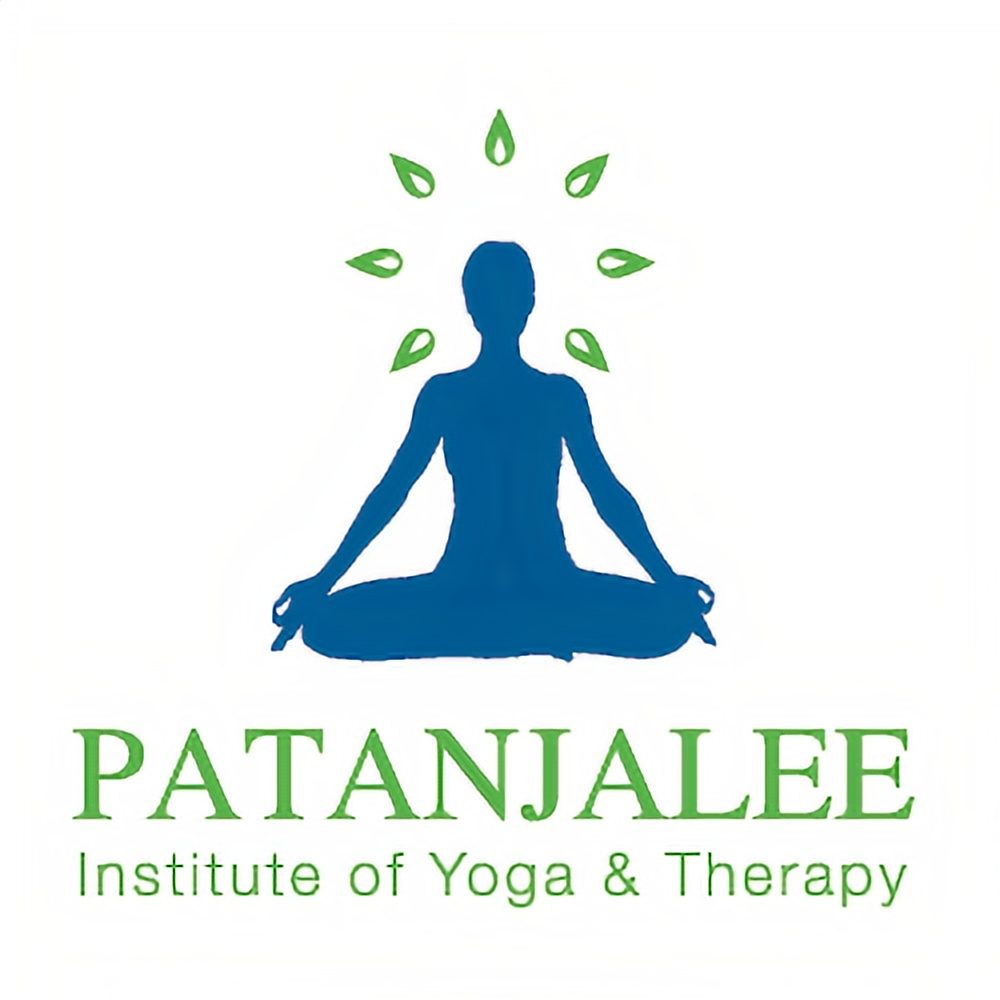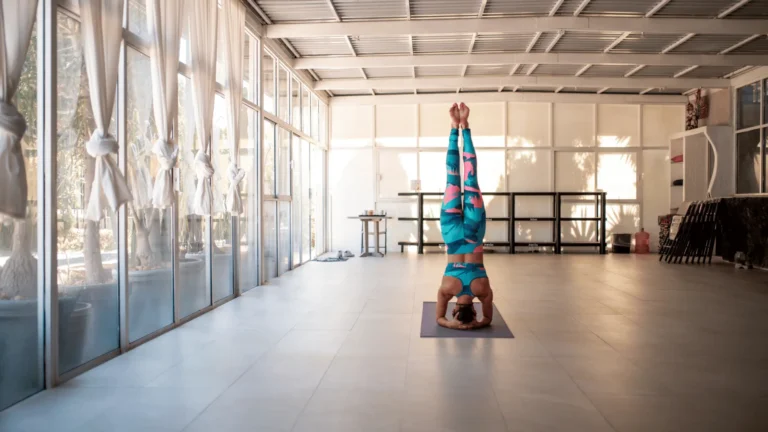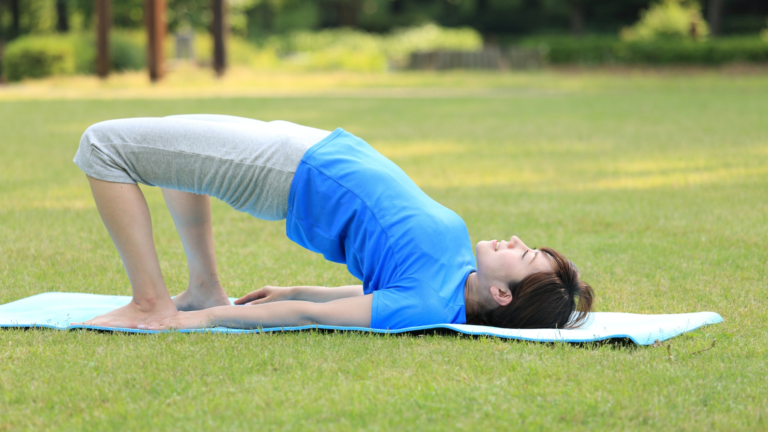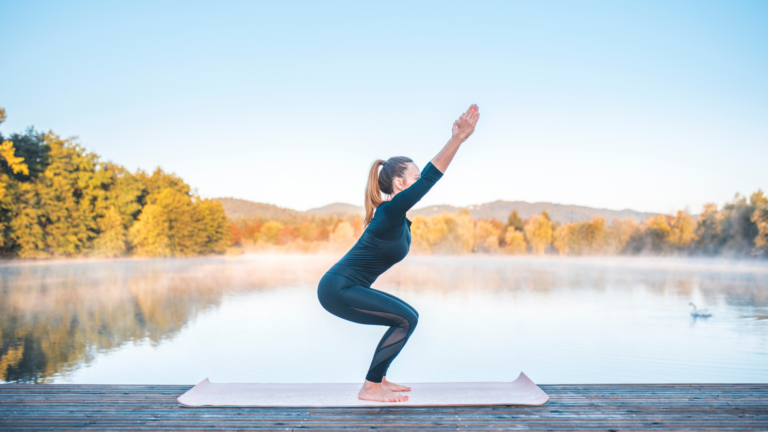Matsyasana – Steps, Benefits, Cautions
Matsyasana, commonly known as Fish Pose, is a supine back-bending yoga posture that stretches and strengthens the muscles in your chest, back, and neck. This asana is named after the Sanskrit word “Matsya,” which means fish. It is said that practicing Matsyasana helps one float like a fish in water. This posture is not only beneficial for the body but also has a profound impact on the mind and soul. Practitioners should hold the Matsyasana pose for no more than one to two minutes . It is best to practice it two to three times a day and be careful not to overdo it.
In this blog, we will delve into the steps to practice Matsyasana correctly, explore its numerous benefits, and discuss the precautions and contraindications to keep in mind while performing this asana.
Steps to Practice Matsyasana

Performing Matsyasana correctly is crucial to reap its benefits and avoid any potential injuries. Here is a step-by-step guide to practicing Fish Pose through online yoga classes:
Step 1: Preparation
- Warm-Up: Before attempting Matsyasana, it is essential to warm up your body with some gentle stretching or basic yoga poses like Bhujangasana (Cobra Pose) or Setu Bandhasana (Bridge Pose) to prepare your spine and neck.
- Positioning: Lie flat on your back on a yoga mat with your legs extended and arms resting alongside your body.
Step 2: Entering the Pose
- Leg Position: Keep your legs together and toes pointed. Place your hands under your buttocks with palms facing down. Ensure your forearms and elbows are close to your body.
- Lifting the Chest: Press your forearms and elbows firmly into the mat, and as you inhale, lift your chest upward, arching your back. Your head will naturally tilt backward, and the crown of your head will rest gently on the mat.
- Engaging the Core: Engage your core muscles to support the arch in your back. Your weight should be distributed between your buttocks, forearms, and head.
Step 3: Holding the Pose
- Relaxation: Close your eyes and take slow, deep breaths. Focus on the stretch in your chest, throat, and abdomen. Hold the pose for 15-30 seconds or as long as comfortable.
- Breathing: Maintain a steady and calm breath. Inhale deeply through your nose and exhale through your mouth, allowing your body to relax and open up.
Step 4: Releasing the Pose
- Lowering the Chest: To come out of the pose, press firmly into your forearms, and as you exhale, slowly lower your chest and head back to the mat.
- Relaxation: Release your hands from under your buttocks and let your arms rest alongside your body. Lie flat on your back and take a few deep breaths to relax.
Benefits of Matsyasana
Matsyasana offers a wide range of physical, mental, and emotional benefits.
Here are some of the key advantages of practicing Fish Pose:
Physical Benefits
- Improves Posture: Matsyasana helps in correcting poor posture by stretching and strengthening the muscles of the back, neck, and shoulders. It counteracts the effects of slouching and promotes an upright posture.
- Opens the Chest and Lungs: This pose expands the chest cavity, enhancing lung capacity and improving respiratory function. It is particularly beneficial for individuals with asthma or other respiratory conditions.
- Stimulates the Thyroid and Parathyroid Glands: The gentle stretch in the neck stimulates the thyroid and parathyroid glands, which play a crucial role in regulating metabolism and calcium levels in the body.
- Relieves Tension in the Neck and Shoulders: Matsyasana helps release tension and tightness in the neck and shoulders, reducing the risk of stiffness and pain in these areas. Joining online yoga classes for shoulder pain relieves shoulder discomforts.
- Strengthens the Back and Core: The arch in the back and the engagement of the core muscles in this pose help strengthen the spinal muscles and the core, enhancing overall stability and balance.
Mental and Emotional Benefits
- Reduces Stress and Anxiety: The deep breathing and chest opening in Matsyasana promote relaxation and reduce stress and anxiety. It calms the mind and induces a sense of tranquility. Read our blog “ Yoga For Relaxation And Stress Relief ” to learn deeper about the role of yoga in stress management.
- Boosts Energy Levels: This pose invigorates the body and mind, boosting energy levels and combating fatigue. It is an excellent posture to practice when feeling low on energy.
- Enhances Focus and Concentration: The relaxation and deep breathing involved in this pose help improve focus and concentration, making it beneficial for students and professionals alike.
- Promotes Emotional Balance: Matsyasana opens the heart chakra (Anahata), promoting emotional balance and a sense of openness and compassion. It helps release pent-up emotions and fosters a positive outlook.
Therapeutic Benefits

- Alleviates Respiratory Issues: By expanding the chest and improving lung function, Matsyasana can alleviate symptoms of respiratory issues such as asthma, bronchitis, and congestion.
- Eases Digestive Problems: The gentle stretch in the abdominal region stimulates the digestive organs, aiding in better digestion and relieving issues like constipation and bloating.
- Improves Blood Circulation: The pose enhances blood circulation, particularly to the head and neck region, promoting overall cardiovascular health.
Cautions and Contraindications
While Matsyasana is beneficial, it is essential to practice it with caution, especially if you have certain medical conditions. Here are some precautions and contraindications to keep in mind:
Precautions
- Neck Issues: If you have any neck injuries or conditions such as cervical spondylosis, avoid practicing Matsyasana or consult a qualified yoga instructor for modifications.
- Back Problems: Individuals with severe back problems, including herniated discs or chronic back pain, should refrain from practicing this pose or seek guidance from a yoga therapist.
- Heart Conditions: People with heart conditions, high blood pressure, or low blood pressure should practice Matsyasana under medical supervision.
- Head and Eye Conditions: If you have any head or eye conditions such as glaucoma or detached retina, avoid this pose as it involves pressure on the head and eyes.
Contraindications
- Migraine: Individuals suffering from migraines should avoid practicing Matsyasana during an episode as the head position can exacerbate symptoms.
- Pregnancy: Pregnant women should avoid Matsyasana, especially in the later stages of pregnancy, as it involves lying on the back and arching the spine, which can be uncomfortable and unsafe.
- Recent Surgeries: If you have undergone recent surgeries, particularly in the abdomen, chest, or neck area, refrain from practicing this pose until fully recovered and cleared by your doctor.
- Injuries: Avoid practicing Matsyasana if you have any acute injuries in the neck, back, or shoulders. Wait until you have fully healed before attempting this pose.
Modifications and Variations

For beginners or those with limited flexibility, Matsyasana can be modified to make it more accessible. Here are some variations and modifications:
- Supported Matsyasana: Place a bolster or a rolled-up blanket under your back to support the arch. This modification reduces the strain on your neck and back while still providing the benefits of the pose.
- Half Matsyasana: Instead of extending your legs, keep your knees bent and feet flat on the mat. This variation reduces the intensity of the pose and is easier on the lower back.
- Using a Yoga Block: Place a yoga block under your head for additional support. This modification is helpful for those with neck issues or limited flexibility.
Heart-Opening and Confidence-Boosting Posture
Matsyasana is often called the “destroyer of negativity” because of its powerful heart-opening effect. By expanding the chest and stimulating the heart chakra (Anahata), this pose encourages feelings of openness, self-acceptance, and compassion. Many practitioners report a greater sense of confidence and emotional resilience after practicing Matsyasana regularly, making it a valuable tool for anyone struggling with self-doubt or low mood.
A Natural Mood Enhancer
Scientific studies show that backbending poses like Matsyasana stimulate the release of endorphins and serotonin, which naturally uplift mood and combat fatigue. A 2022 wellness survey revealed that 68% of yoga practitioners experienced improved emotional well-being through regular chest-opening asanas like Fish Pose, highlighting its role as a natural stress reliever. By practicing Matsyasana, you can replace heaviness with lightness, fostering inner joy and peace.
Boosts Immunity and Vital Energy
Matsyasana not only opens the chest but also enhances oxygen flow throughout the lungs, which strengthens the immune system and improves overall vitality. The gentle stimulation of the throat and thymus gland supports the body’s defense mechanism, making this pose a natural immunity booster. Practicing this asana regularly revitalizes your prana (life energy), leaving you refreshed, energized, and better equipped to face daily challenges.
Enhanced Mental Clarity and Focus
Beyond its physical benefits, Matsyasana also sharpens mental clarity and focus. According to The Times of India Matsyasana is ranked among seven yoga asanas known to significantly boost brain health—supporting mental sharpness, attention span, and stress reduction. According to The Times of India, Matsyasana is ranked among seven yoga asanas known to significantly boost brain health. Regular practice supports mental sharpness, improves attention span, and helps reduce mental fatigue. This is especially valuable in today’s fast-paced lifestyle, where stress and distractions often cloud our ability to think clearly. When combined with mindful breathing, Matsyasana calms the nervous system, which in turn reduces cortisol levels the stress hormone. This creates the ideal mental state for productivity, creativity, and emotional balance. Many practitioners report feeling lighter, more centered, and mentally energized after practicing this pose. In essence, Matsyasana is not just a body stretch—it’s a holistic practice that nurtures cognitive health, sharpens memory, and brings greater focus into everyday life.
Conclusion
Matsyasana, or Fish Pose, is a powerful yoga posture that offers a multitude of benefits for the body, mind, and spirit. By following the steps outlined above and being mindful of the precautions and contraindications, you can safely incorporate this pose into your yoga practice. Whether you are looking to improve your posture, relieve stress, or enhance your overall well-being, Matsyasana is a valuable addition to your yoga routine. Remember to listen to your body, practice with awareness, and enjoy the profound effects of this beautiful asana.




